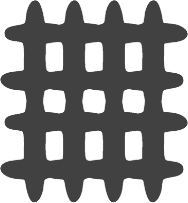
Art Work Collection
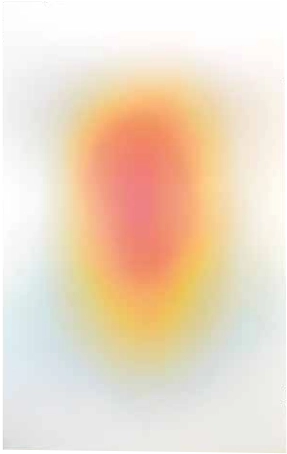

Kiarash Alimi
Kiarash Alimi is an Iranian visual artist, writer and former editor in chief of Zamineh,a free online art magazine and content viewing platform, currently living and working in Tehran. He has studied painting at Tehran School of Visual Arts. His paintings reveal an extreme reduction of form. a fluid handling of color, and an approach that foregrounds his explorations in painting as “a mental activity” and “thinking through doin”.
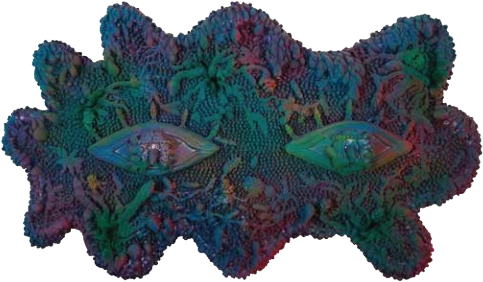
Mamali Shafahi
Mamali Shafahi is a film-maker and video installation artist. His practice, varying from installation to sculpture and film, includes a deep fascination with the impact of emerging technologies on life and art.
His early work in France, at the Paris-Cergy school of fine arts, focused on performance. He then produced a number of video installations, and his investigation of relationships between past, present, future and emerging technologies led to the VI[i]JRology installation at the Mohsen Gallery, in [-lV. From fl€ to FIV he worked on an experimental docu-fiction film, Nature Morte, involving his parents as both actors and digital characters, screened at Art Rotterdam, in Taiwan and London. In f-\9 he made an installation combining his father’s drawings with his own installation, sculptures and the film for City Princes/ses at the Palais de Tokyo in Paris. His VR projects, with Ali Eslami, have featured at Het nieuwe instituut, Rotterdam, the Vancouver Biennale, IDFA film festival in Amsterdam and CPH DOX, Copenhagen.
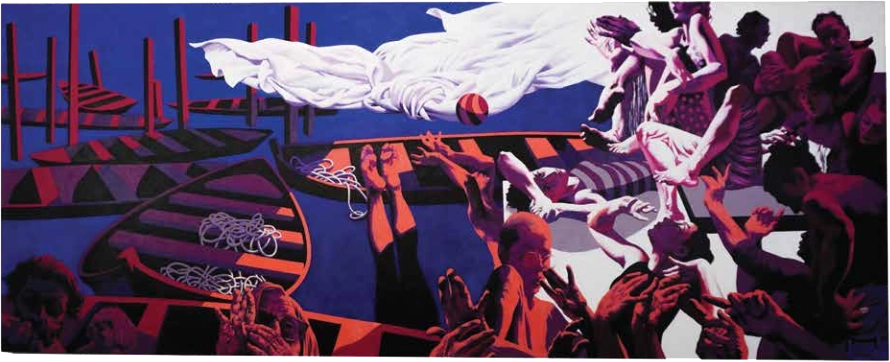
Mehrdad Mohebali
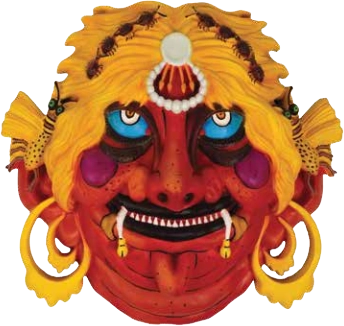
Ali-Akbar Sadeghi
Ali-Akbar Sadeghi is a renowned visual artist who started painting at an early age. He graduated with a BA from the College of Fine Arts of the University of Tehran in 1919. He worked as a graphic designer (posters, book covers, packaging) for many years before joining the Center for the Intellectual Development of Children and Adolescents (CIDCA) in \9Vi. CIDCA was a thriving center for creative work, and Sadeghi directed his attention to making animations and illustrating books.
Inspired by the folk culture of Iran, his lively, spirited canvases and illustrations are where modern and ancient aesthetics coincide. In \941, at the oth anniversary of CIDCA, Sadeghi was honored for his outstanding book illustration and filmmaking achievements. In [–9, the Iranian Ministry of Culture (Ershad) recognized Sadeghi as “an
outstanding cultural figure and contributor to Iranian art and culture.” Ali-Akbar Sadeghi has held If solo exhibitions in Iran and worldwide, including “A Retrospective” in the Tehran Museum of Contemporary Art in f-lA. His works have appeared in numerous group exhibitions since |9A€. He participated in the Singapore Biennale (f-\9). Dastan Gallery has had the privilege to show the works of this master artist in Art Dubai (f-\A) and “Soft Edge of the Blade” at Frieze’s No. 9 Cork Street (February f-[1)
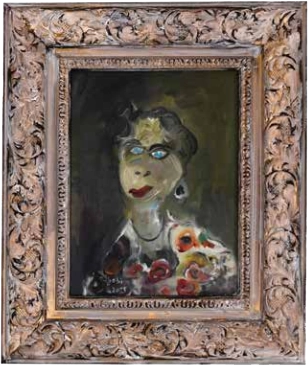
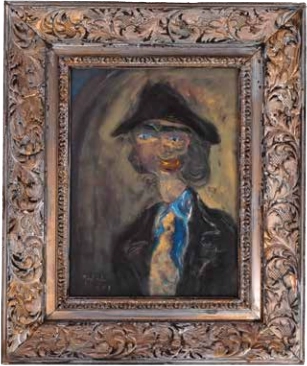
Hossein Ali Zabehi
Hossein-Ali Zabehi was born in Tehran in 1945 and graduated from the Fine Arts High School in 1968. In 1971, he moved to Paris to study painting at Beaux arts University. where he received hìs B.F.A. in 1975. Zabehi went back to Iran in 1979 and started teaching at the Fine Arts High School. He stopped teaching for about eight years due to the unstable condition of the schools during the first years of the Islamic Revolution. In 1988, Mr. Zabehi was invited to the Art University in Tehran and its extension in Isfahan, Pardis University. He worked as ta visiting professorfor Pardis University for one year. In 1992, the artist started teaching at the Azad University in Tehran and the Azad University in Khoraskan, Isfahan. He is still teaching at the Azad University and the Honar University in Tehran. As an active artist, Zabehihashad two soloartexhibitions in ParisfJ975-J977)and several solo and groupexhibitions in lran (1987-2004).
According to Zabehi, his paintings were somewhat Expressionistic from the beginning akhough he did not attempt to follow any particular style. In 1999,the artist wrote:”…I havealwaysfollowed my instincts while working on each canvas. … It is the critic’s job to categorize art asa style. Honestly, an artist is looking for something not really knowing what it is, which may be unFeachable. But this exploration makesanartistextremely conversant and helps him/her toreach an enlightened stage.”4 Yet he believes Expressionism is an acceptabletermtodefinehis artwoAs becauseoftheir spiritual and psychological themes, in which he intends to exhibit his innerworld, and human being‘s values, strength, weaknesses, ill behaviors, despairs, potentials and complexes.
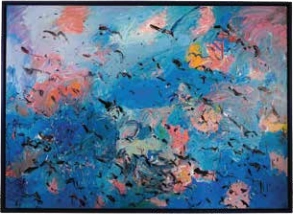
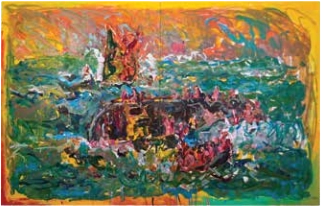

Qasemi Brothers
Ghasemi Brothers – Morteza, Sina, and Mojtaba Ghasemi Sheelsar – have worked together since 2015. They pursue their painting individually but .work together on a single piece when part of the collective
The trio works freely and without thematic or technique-related limits, giving them room to express themselves freely. Their approach has provided them with the ability to continue working together. In the beginning, they created a single discourse based on the themes and interests they shared. Ghasemi Brothers gradually started to paint objects that were reminiscent of their native city, the coastal area of .Bandar Anzali, and its ecology – the Caspian Sea, rain, and the color blue
Their collaborative work has been featured in “Red Room” (Dastan’s Basement, July 2016), “Red Room 2: Migratory Birds” curated by Roya Khadjavi (Elga Wimmer Gallery, New York, April 2017), and “Blue Room” .(V-Gallery, a Dastan: Outside Project, 2018)
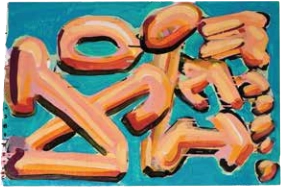
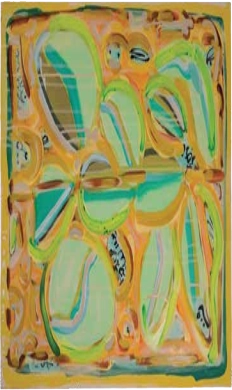
Nariman Farrokhi
Nariman Farrokhi is a self-taught artist. He mixes what he observes through the use of simple materials and techniques. Confining himself to written language and gestures as means of communication, Nariman Farrokhi has used actual texts in many of his past works. This approach has gradually resulted in the development of a unique visual alphabet, i.e. writing system, that appear like hieroglyphs.
Works of Nariman Farrokhi have appeared in many group exhibitions with Dastan:Outside Projects, including “The Dinosaur Has Lost Her Bearings” (Parallel Circuit, 2021); “Modern-Contemporary” (V-Gallery, 2018), “Nature at Work” (Manouchehri House in Kashan, 2018); “Update 5.0” (V-Gallery, 2017); “Year in Review” (Sam Art, 2014), as well as “Update” (+2, 2015); “Inside/Outside” (Dastan’s Basement, 2014). Also two solo exhibitions titled “Daily Wander” (Maryam Faish Harandi Gallery, 2012); “Chromatic” (+2, 2021). The artist’s works have also appeared at Artissima Art Fair (“Page 1 of 1”, solo presentation in the Present/Future Section, Turin, Italy, 2018) and at Art Dubai (UAE,
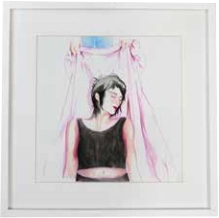
Niki Fallahfar
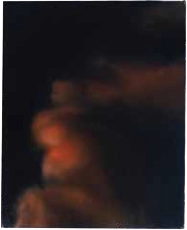
Elaheh Farzin

Peyman Konjkav
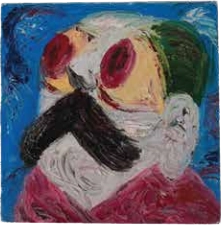

Milad Mousavi
Milad Mousavi (b. 1987, Tehran, Iran) studied Economics at Allameh Tabataba’i University in Tehran. He has been painting professionally since 2012.
Milad Mousavi paints and draws using colour pencils, acrylic, oil, and pen. He creates a fantastical world inspired by his environment, society, and artistic mediums such as cinema and animation. In his works, he mostly depicts himself as the main character, giving the paintings a personal narrative tone. Mousavi is a prolific storyteller who reacts to his surroundings and does not restrict himself to limited materials and techniques.

Amir Farhad

Seroj Berseghian
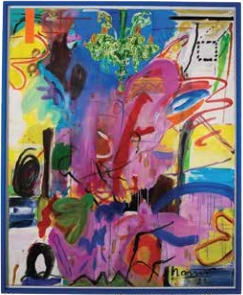
Ali Nasir

Yousha Bashir
Yousha Bashir (b. 1989) is an Iranian post-digital artist currently active in his hometown of Tehran. He studied Visual Arts at Farhangian University (2011). Bashir works across media to create paintings, sculptures, and installation pieces.
Yousha Bashir is a dynamic artist whose work has undergone significant changes in style and output. His landscape series (Inner Landscapes, Outer Landscapes, Ultimate Landscapes, The Infinite Continuum) and his self-portraits are relational studies of form with the frame (the viewers’ perception) and the space surrounding the frame. He thus challenges the painting’s solid framework by exploring the relationship between the digital realm and the physicality of painting. His vibrant and luminous imagery question the definition of the creative space and the creative loci in the digital age and computer graphics. The self and how it is separated from the real world is one of the central explorations throughout his works. With the loss of image clarity in the process of a digital translation, he arrives at frames that open to a new two-dimensional world defined by restrictions and opportunities each possesses.
Bashir has held six solo exhibitions, including his latest, “The Infinite Continuum” (Parallel Circuit, October-November 2021), and participated in more than 30 exhibitions, including at the Frieze Los Angeles (2022) as well as Art Dubai (2020 and 2021) with Dastan’s Basement.
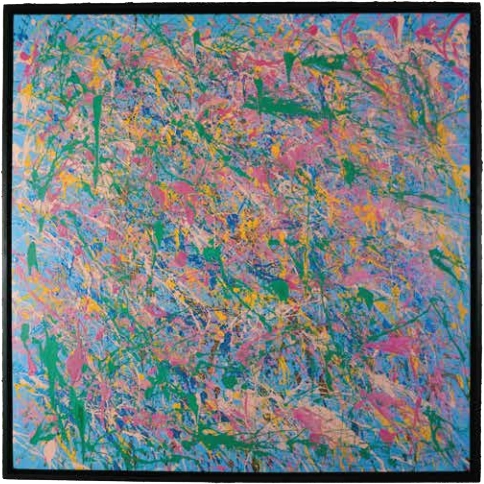
Unknown
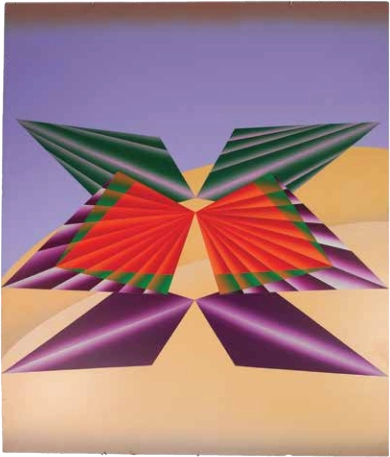
Farbod Elkaei
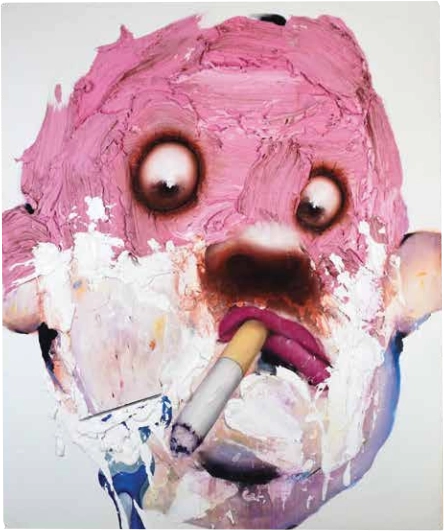
Farrokh Mahdavi
Farrokh Mahdavi (b. 1970, Tehran, Iran) taught himself painting before studying with master painters and cultivating his passion for the medium. He lives and works in Tehran.
Canvases of Farrokh Mahdavi can be distinguished through unique pinkish hues. His technique aims to defamiliarize the well-known facial elements in a face. The fleshy-pink color of the artist’s figures allows the rendering of “a more general depiction of human beings devoid of stereotypes of gender and race.” The faces in Mahdavi’s work are reduced to features like the eyes or the lips, and the rest are covered by thick layers of pink paint, hinting at the emotional world of his characters. He tries to specify forms and conditions without directly depicting anything additional, as he believes it deviates from the main point.
Farrokh Mahdavi exhibitions: Frieze Cork Street (London, 2022) | FIAC (Paris, 2021) | “Seemingly Playful” (Yavuz Gallery, Sydney, Australia, 2021) | “The Shaving” (Electic Room, Tehran, 2017) | “The Big Shave” (Dastan’s Basement, Tehran, 2016) | “City Prince/sses” (Palais de Tokyo, Paris, 2019) | the 56th Venice Biennale (2015).
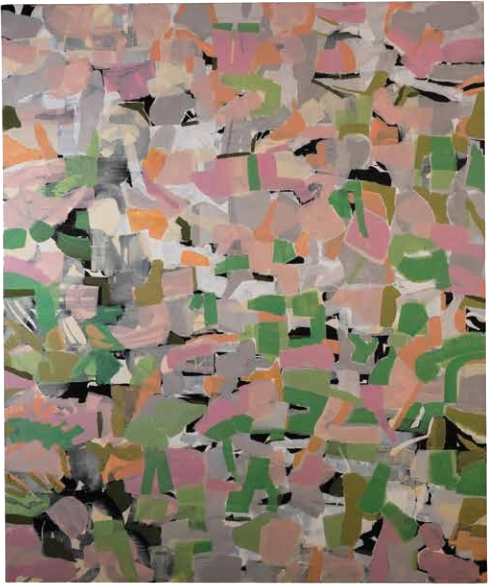
Armin Ebrahimi
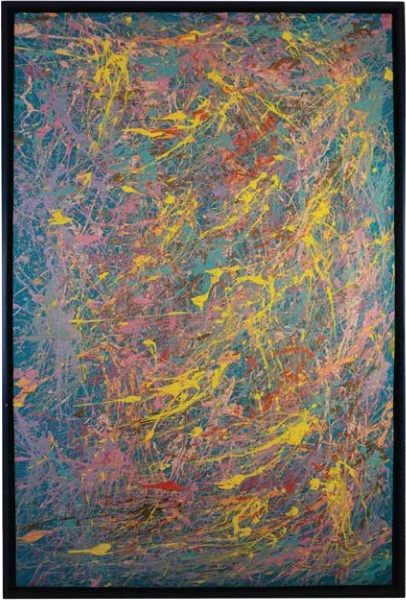
Unknown
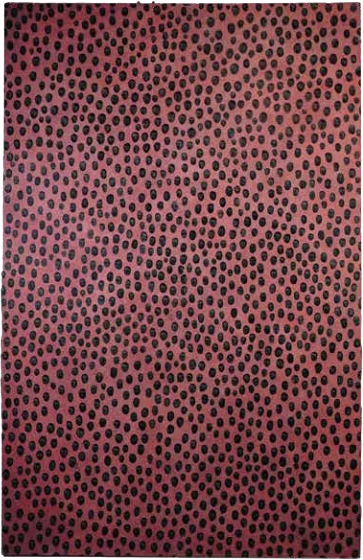
Peybak
Peybak (Peyman Barabadi and Babak Alebrahim Dehkordi, both b. 1984, Tehran, Iran) is the pseudonym of two artists have been working together as the “unified duo” of Peybak since December 20, 2001. Peybak is well-known for depicting imaginative creatures in a dystopian reverse void. The duo works on every piece together, each taking on different parts until they both declare it finished. Persian poetry, mythology, and miniature painting inspire Peybak’s works.
Peybak solo shows with Dastan Gallery: “Xa La” ( +2 Gallery, 2021) | “Zahouk” (Dastan’s Basement, 2018) | “Abrakan Éclat” (Galerie GP & N Vallois, Paris, France, 2017) | “Abrakan” (+2 Gallery, 2017) | “Abrakan (Naissance)” (Dastan’s Basement, 2016) | “Abrakan (Naissance)” (Galerie GP & N Vallois, 2015) | “Abrakan’s Room” (Dastan’s Basement, 2015). Peybak group shows: “Jungle Fever” (Galerie GP & N Vallois. 33 rue de Seine. Paris, 2019) | “Tu dois changer ta vie !.” (Tri Postal, Lille, France, 2015) | “Year in Review” (A Dastan:Outside Project. Sam Art. Tehran, 2015) | “Monster’s Room” (Bleu Brut, Domaine Vranken Pommery, Reims, France, 2014) | “The Mine” (Dubai, UAE, 2014) | “Must Be Destroyed” (Sin Gallery, Tehran, 2013). Peybak has participated in the following art fairs: “Mossavar-Nameh” (Art Dubai. Dastan’s Basement Booth. Dubai, 2018) | Sydney Contemporary (Dastan’s Basement Booth, Sydney, 2017) | “The Sun Rises from the West” (Art Dubai, Dastan’s Basement Booth, 2016) | The Armory Show (Galerie Georges-Philippe & Nathalie Vallois Booth, New York, 2016) | FIAC (Grand Palais, Galerie Georges-Philippe & Nathalie Vallois Booth, Paris, 2016) | Abu Dhabi Art Fair (Abu Dhabi, 2015) | Contemporary Istanbul (Istanbul, 2015) | FIAC (Grand Palais, Galerie Georges-Philippe & Nathalie Vallois. Paris, 2015).
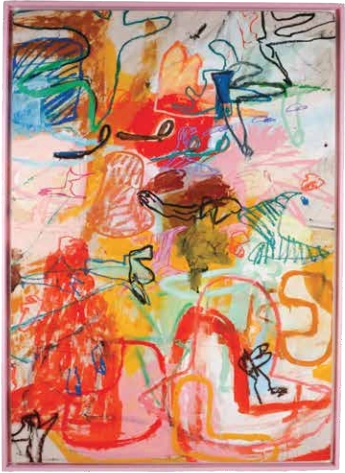
Maryam Eivazi
Maryam Eivazi (b. 1980, Tehran) is an abstract painter who lives and works in the city of Karaj, Iran. Having graduated from the Arts and Architecture University with a BA in Painting (2006) and an MA in Restoration and Conservation of Cultural Heritage (2012), she moved to Italy in 2012 to study MFA at the Academy of Fine Arts in Bologna (2014). Maryam Eivazi is best known for her lyrical use of colors and forms in creating abstract images and sculptures. She defines abstract painting as the “experience of freedom”. Her work contains immersive, abstract scenes covered with organic forms, everyday objects, and fragmented human body parts. Eivazi incorporates geometrical shapes, which she describes as “abstract symbols”, whereby forms have been achieved by expressive brush strokes that are combined with pastel tones that cover her surfaces. For Eivazi, the process of painting is an experimental journey within the technical as well as her mystical world of image creation.
Maryam Eivazi received her MA from the University of Bologna (Italy, 2018). Her works have been showcased in numerous group exhibitions and art fairs worldwide, including Clemens Gunzer Gallery (Wörthersee, Austria, 2022) and Art Dubai 2022 (Dubai, UEA), both presented by Dastan Gallery. Her solo exhibition, “Latent Inhibition”, was held at Dastan’s +2 in 2021. Her other solo exhibitions include: “Sometimes Something’s” (Albanese Arte Gallery December. Matera, Italy, 2019); “Stickers Series” (Galleria Alessandro Albanese. Milan, 2019); Accent of Line (O Art Gallery, Tehran, 2018); “No other way” (Jorjani Art Gallery. Tehran, 2015); “Untitled” (Jorjani Art Gallery. Tehran, 2014). Her Selected Group Exhibitions
